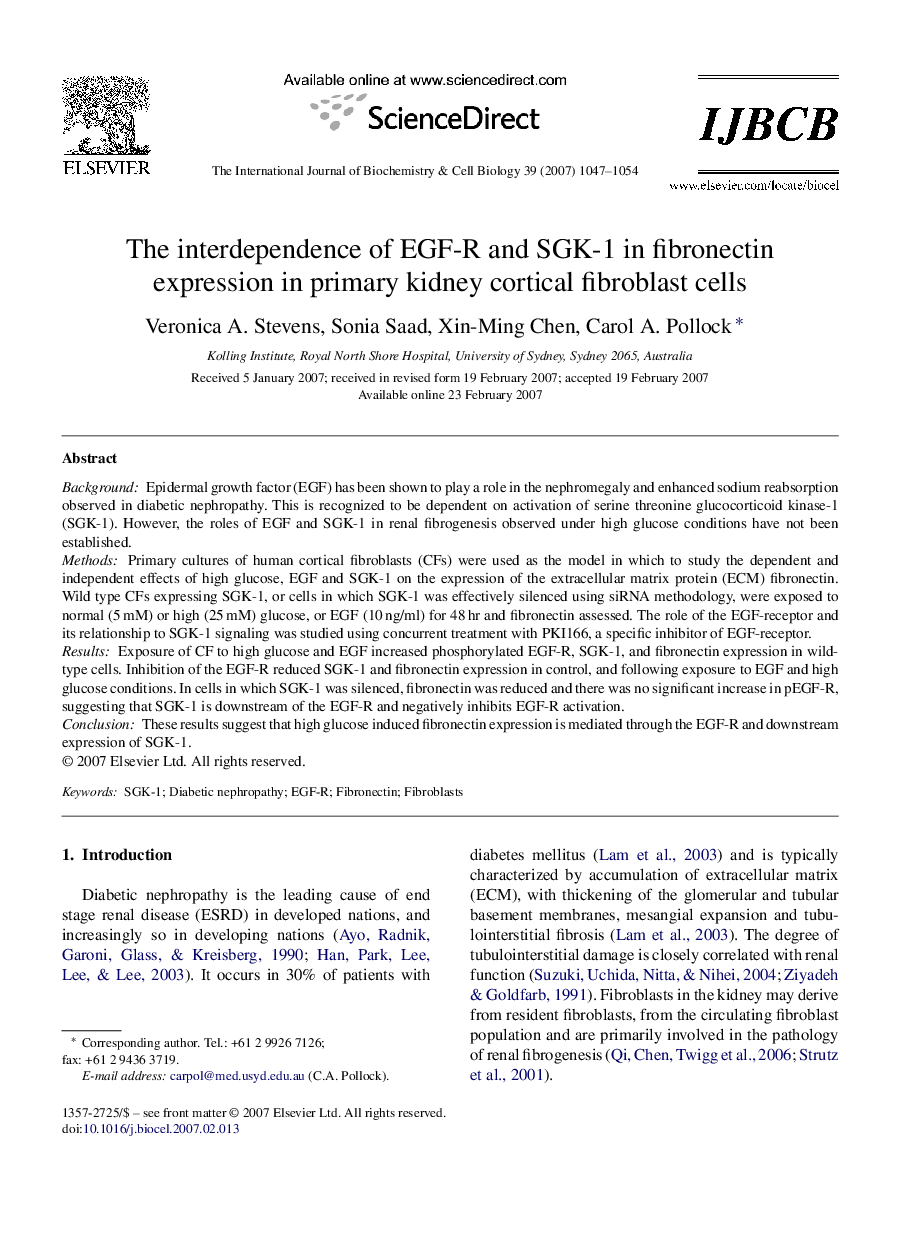| Article ID | Journal | Published Year | Pages | File Type |
|---|---|---|---|---|
| 1984465 | The International Journal of Biochemistry & Cell Biology | 2007 | 8 Pages |
BackgroundEpidermal growth factor (EGF) has been shown to play a role in the nephromegaly and enhanced sodium reabsorption observed in diabetic nephropathy. This is recognized to be dependent on activation of serine threonine glucocorticoid kinase-1 (SGK-1). However, the roles of EGF and SGK-1 in renal fibrogenesis observed under high glucose conditions have not been established.MethodsPrimary cultures of human cortical fibroblasts (CFs) were used as the model in which to study the dependent and independent effects of high glucose, EGF and SGK-1 on the expression of the extracellular matrix protein (ECM) fibronectin. Wild type CFs expressing SGK-1, or cells in which SGK-1 was effectively silenced using siRNA methodology, were exposed to normal (5 mM) or high (25 mM) glucose, or EGF (10 ng/ml) for 48 hr and fibronectin assessed. The role of the EGF-receptor and its relationship to SGK-1 signaling was studied using concurrent treatment with PKI166, a specific inhibitor of EGF-receptor.ResultsExposure of CF to high glucose and EGF increased phosphorylated EGF-R, SGK-1, and fibronectin expression in wild-type cells. Inhibition of the EGF-R reduced SGK-1 and fibronectin expression in control, and following exposure to EGF and high glucose conditions. In cells in which SGK-1 was silenced, fibronectin was reduced and there was no significant increase in pEGF-R, suggesting that SGK-1 is downstream of the EGF-R and negatively inhibits EGF-R activation.ConclusionThese results suggest that high glucose induced fibronectin expression is mediated through the EGF-R and downstream expression of SGK-1.
